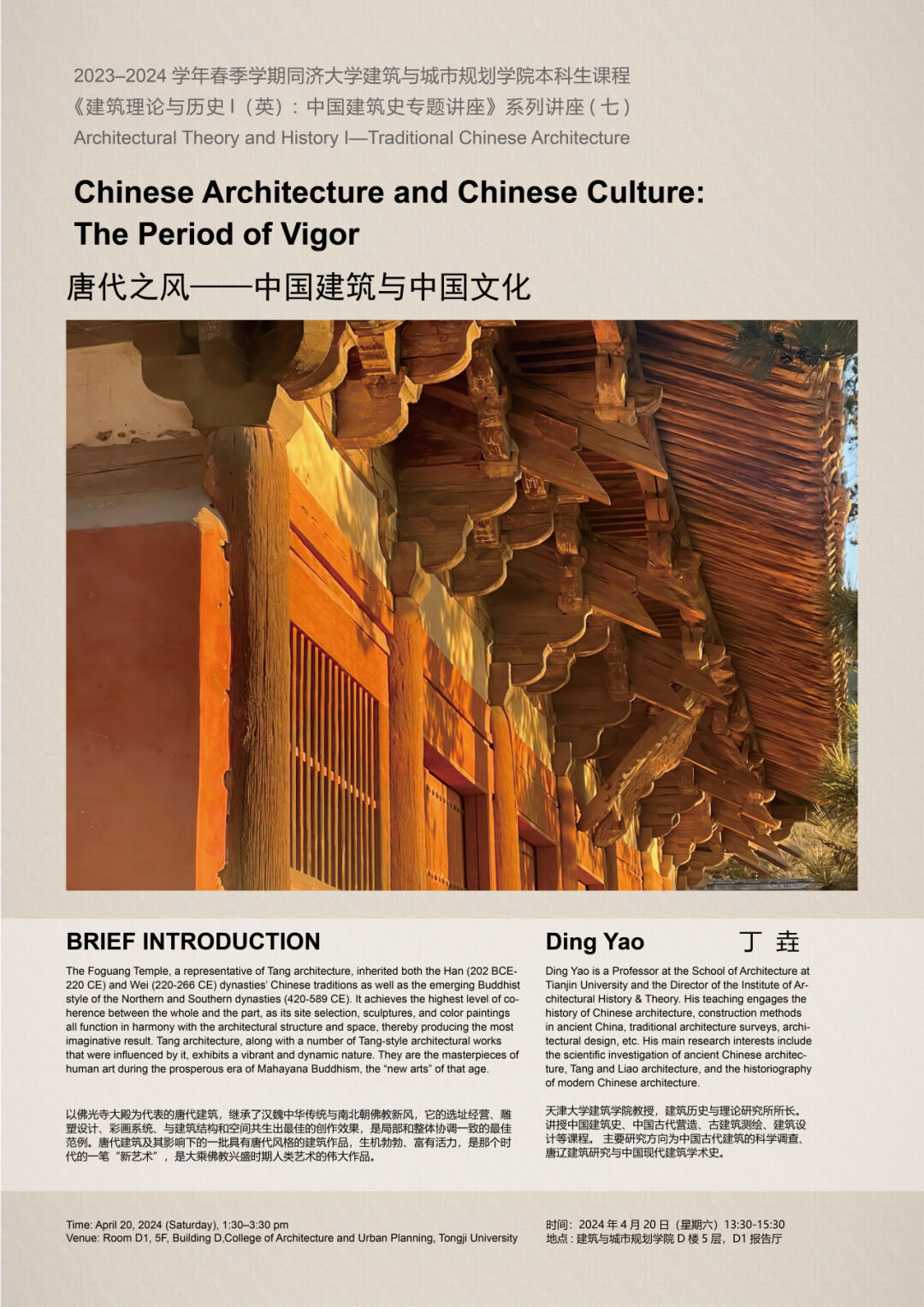

Lecture Series:Architectural Theory and History I—Traditional Chinese Architecture
Chinese Architecture and Chinese Culture:
The Period of Vigor
Time: April 20, 2024 (Saturday), 13:30–15:30
Venue:Room D1, 5F, Building D, College of Architecture and Urban Planning, Tongji University
Speaker: Ding Yao
Ding Yao is a Professor at the School of Architecture at Tianjin University and the Director of the Institute of Architectural History & Theory. His teaching engages the history of Chinese architecture, construction methods in ancient China, traditional architecture surveys, architectural design, etc. His main research interests include the scientific investigation of ancient Chinese architecture, Tang and Liao architecture, and the historiography of modern Chinese architecture.
Brief Introduction:
The Foguang Temple, a representative of Tang architecture, inherited both the Han (202 BCE-220 CE) and Wei (220-266 CE) dynasties' Chinese traditions as well as the emerging Buddhist style of the Northern and Southern dynasties (420-589 CE). It achieves the highest level of coherence between the whole and the part, as its site selection, sculptures, and color paintings all function in harmony with the architectural structure and space, thereby producing the most imaginative result. Tang architecture, along with a number of Tang-style architectural works that were influenced by it, exhibits a vibrant and dynamic nature. They are the masterpieces of human art during the prosperous era of Mahayana Buddhism, the new arts of that age.
 ABOUT US
ABOUT US




